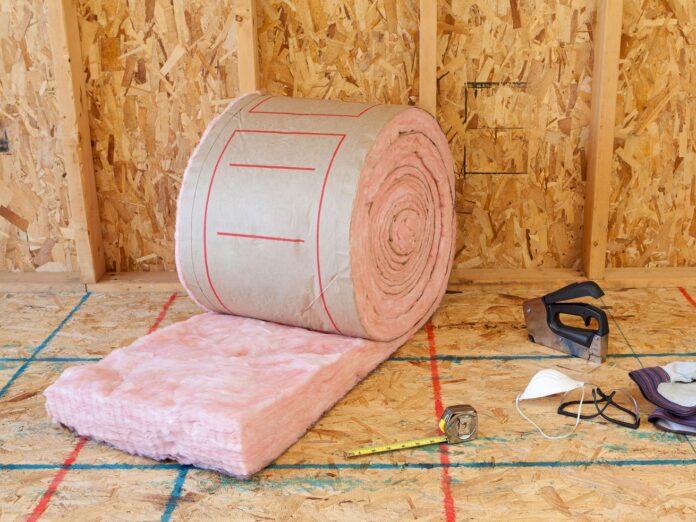[ad_1]

Unless your home is built on a concrete slab, it has a crawl space, a basement, or a combination. These spaces are a handy place where you can run your plumbing, HVAC, and wiring, plus they can help keep the rest of your house warmer. To reap the temperature-regulating benefits of a crawl space, it must be adequately insulated. Read on to learn why you should insulate your crawl space and how to do so.
Basements are at least partially insulated by the fact that they are typically three-quarters buried in the ground. Crawl spaces should be insulated, too, to prevent the plumbing from freezing in colder climates, to prevent energy loss in HVAC ducts, and to help insulate the house above.
There is a complication though. For a long time, it was considered good building practice to vent a crawl space, on the theory that a flow of fresh air would keep the crawl space dry. Experience has proved that, in fact, venting in more humid climates does more harm than good. When damp outside air meets the cooler surfaces of a crawl space, the moisture condenses and can promote mold growth or even rot the wood inside. But vented crawl spaces do work in the dry environment of the West and Southwest. They’re also commonly found in regions prone to seasonal flooding.
What does this mean? Your approach to insulating your crawl space is going to depend on whether it’s vented or not. If vented, the crawl space ceiling’s floor joists should be insulated, protecting the floor above; if unvented, the crawl space walls should be insulated to keep the entire space warmer.
Vented Crawl Spaces
There are a few insulation options for crawl spaces, but, in a vented one, it’s important to use a material that’s non-permeable. For that reason, fiberglass batts are not a good option. First, fiberglass fails if it’s not air-sealed or if it gets wet. In a damp environment like a vented crawl space, even faced fiberglass batts leak air. They also retain moisture and become a wonderful medium for growing mold.
Closed-cell spray foam insulation is a better option; it creates an effective air seal and thermal barrier when sprayed into the joist bays above the crawl space. However, spray foam is expensive and is usually installed by professionals. If you’re up for tackling it, though, there are DIY spray foam kits that will reduce the cost slightly.
An easier and less expensive method is to install 2-inch-thick extruded polystyrene (XPS) or foil-faced polyisocyanurate panels over the bottoms of the floor joists. Use cap-head or long structural screws to attach the XPS or polyiso. Again, the important detail is to seal everything to prevent air from migrating to the floor above. Use tape to seal the panel seams and expanding polyurethane foam to seal the perimeter along the walls. (You can also increase the insulation factor by first installing fiberglass or Rockwool insulation batts into the joist bays, then covering them with the air-sealed panels.)
In either type of crawl space, vented or unvented, you should install a moisture barrier over the floor. A layer of 6-mil (or heavier) plastic duct-taped at the seams will significantly reduce the amount of moisture in the crawl space. If you have concrete foundation walls, tape may not adhere well and you may have to seal the perimeter by securing the plastic to the walls with 1×3 strapping secured with masonry screws.
Unvented Crawl Spaces
In a closed (unvented) crawl space, the walls should be insulated, and your choices are exactly those used in vented crawl space ceilings: spray foam or rigid foam panels. You can also use a combination of the two. Spray foam is effective when used to insulate the rim joists (the outer floor joists that sit on top of the foundation walls), while the panels are an effective and more economical way to insulate the walls from the interior. You can also use rigid foam to insulate the rim joists. Cut the panels into narrow pieces that fit tightly between the subfloor and the top of the foundation wall below it and use expanding foam to seal gaps.
As noted above, it’s important to cover the floor with a sealed layer of 6-mil plastic. You should allow a few inches of the sheeting to fold up onto the walls so that when the insulation is installed, it covers the excess and seals off the floor perimeter. Alternatively, you can install the plastic after insulating the walls and tape the plastic’s perimeter to the insulation.
If your crawl space has concrete walls, glue the panels to the walls with construction adhesive and follow these steps:
- To ensure the strongest bond, first, use a stiff brush to clear any dirt or debris from the concrete.
- Next, apply thick beads of adhesive to the wall every six inches or so in an area the width of a panel (about 48 inches).
- Cut the panel to height by scoring it with a sharp knife and snapping off the waste—or cut it with a hand saw (it should reach to the top of the wall).
- Firmly seat the panel against the wall, then push it onto the adhesive.
- Make sure the panel is relatively plumb so you can avoid making complicated cuts at the ends of the wall. Use expanding urethane foam to seal any gaps between panels.
If the crawl space walls are wood-framed, you can use cap-head screws or long roofing nails to attach the panels directly over the studs, rather than fitting the insulation into each bay, which may potentially expose the wood to moisture damage and mold. Seal the panel seams and any gaps with expanding urethane foam.
Building Codes and Crawl Space Insulation
Before insulating your crawl space, it’s a good idea to consult with your local building inspector and/or review your local building codes. Most codes specify a minimum R-value for insulation and some regions require that exposed insulation be fire-resistant.
Recent building codes also specify that unvented crawl spaces be supplied with conditioned air (heat and/or air-conditioning). There are two options:
- Install a new supply register from the house’s system into the crawl space and a passive return into the floor above the crawl space; this may be as easy as cutting into the HVAC ducting that runs through the crawl space.
- Install a passive return in the floor and an exhaust fan in the crawl space, which will help to circulate the home’s conditioned air between both spaces.
[ad_2]
www.thisoldhouse.com










